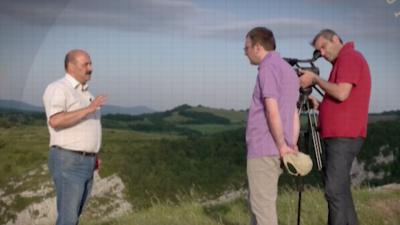
History of the The Armenian-Azerbaijani conflict
The Armenian-Azerbaijani conflict is rooted in a dispute over sovereignty in Nagorny Karabakh, a mountainous area of some 4,400 square kilometres. The territory is inhabited by a local ethnic Armenian majority but formed part of Soviet Azerbaijan. In 1987 Nagorny Karabakh’s Armenian population began a campaign to separate from Azerbaijan and unify with Armenia. The dispute was still unresolved by the time of the Soviet Union’s collapse in 1991, and a two-year war in the early 1990s ended in a decisive Armenian military victory.
By the time of the ceasefire in May 1994, more than 25,000 people had lost their lives, and more than a million were forcibly displaced from their homes. Almost all of the territory of Nagorny Karabakh had broken away from Azerbaijani control. A new entity was established, the de facto Nagorno-Karabakh Republic, which has not been officially recognised by any state, including Armenia, to this day. Armenian forces also occupied seven regions adjacent to the former Nagorno-Karabakh Autonomous Region, whose Azerbaijani populations were internally displaced.
Since 1992 the Conference (later the Organization) for Security and Co-operation in Europe (CSCE/OSCE) mediated negotiations under the auspices of the ‘Minsk Group’, led since 1997 by France, Russia, and the United States. From the late 2000s, however, negotiations were increasingly marginalised by rising military expenditures and deteriorating security conditions along the approximately 200-kilometre-long ‘Line of Contact’. From 2014 ceasefire violations escalated, culminating in a ‘four-day war’ in April 2016, resulting in hundreds of deaths. For the first time since 1994, territory changed hands as Azerbaijan re-captured some small areas.
In 2018, a new Armenian government came to power under the leadership of Nikol Pashinyan. Increased diplomatic contacts with President Ilham Aliyev of Azerbaijan followed, leading to tentative commitments by the leaders to ‘prepare populations for peace’. These were not acted on, however, and large-scale violence resumed in 2020. In July clashes broke out along the internationally recognised Armenia-Azerbaijan border and then a full-scale war along the Line of Contact surrounding Nagorny Karabakh in September to November. With a significant degree of Turkish support, Azerbaijan restored control over most of the territories it had lost to Armenian forces in the early 1990s, including approximately one third of the territory originally under dispute in Nagorny Karabakh itself. At least 5,300 and possibly as many as 7,000 combatants, in addition to 174 civilians, lost their lives in just 44 days.
The ‘second Karabakh war’ was brought to a close on 10 November with a Russian-mediated ceasefire declaration, mandating the deployment of a 2000-strong Russian peacekeeping mission for five years to those parts of Nagorny Karabakh not recaptured by Azerbaijan and a narrow corridor connecting with Armenia across the Azerbaijani district of Lachin. The declaration also mandated the return of all territories occupied by Armenian forces in the 1990s and the construction of a new transit corridor connecting Azerbaijan to its exclave Nakhichevan, and beyond to Turkey, across southern Armenia. While the ceasefire declaration brought another devastating episode of Armenian-Azerbaijani violence to an end, and sets the stage for a dramatic re-ordering of the South Caucasus region, a negotiated Armenian-Azerbaijani peace agreement appears to remain as elusive as ever.
Our work on the Armenian-Azerbaijani conflict
We have been working on the Armenian-Azerbaijani conflict since 2003. We have supported local media professionals to work together on documentary film-making. Between 2012 and 2019 we supported Armenian and Azerbaijani partners to jointly produce a series of documentary films, Parts of a Circle, documenting the history of the conflict as seen from contrasting perspectives.
We also support networks of Armenians and Azerbaijanis to collect and record materials relating to the violence of the 1988-94 period. This work, part of efforts to better understand and ‘deal’ with the past, aims to catalogue source materials which provide people today with a window into the past and support more informed and meaningful discussion of the conflict.
Convening experts, analysts and members of civil society, we also lead conversations about the challenges to negotiating an Armenian-Azerbaijani peace. Called the Karabakh Contact Group, this discussion platform generates new thinking, ideas and potential solutions which are then shared with decision-makers and fed into the official peace process. Much of our work is about laying the groundwork, and developing fundamental relationships so that when the political opportunities arise to move towards peace they can be seized.

